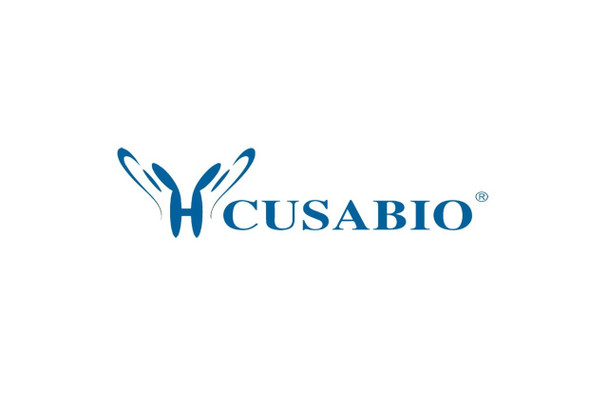Cusabio Human Recombinants
Recombinant Human Killer cell immunoglobulin-like receptor 2DS1 (KIR2DS1), partial | CSB-YP623946HU
- SKU:
- CSB-YP623946HU
- Availability:
- 3 - 7 Working Days
Description
Recombinant Human Killer cell immunoglobulin-like receptor 2DS1 (KIR2DS1), partial | CSB-YP623946HU | Cusabio
Alternative Name(s): CD158 antigen-like family member HMHC class I NK cell receptor Eb6 ActI; CD158h
Gene Names: KIR2DS1
Research Areas: Immunology
Organism: Homo sapiens (Human)
AA Sequence: HEGVHRKPSLLAHPGRLVKSEETVILQCWSDVMFEHFLLHREGMFNDTLRLIGEHHDGVSKANFSISRMRQDLAGTYRCYGSVTHSPYQLSAPSDPLDIVIIGLYEKPSLSAQPGPTVLAGENVTLSCSSRSSYDMYHLSREGEAHERRLPAGTKVNGTFQANFPLGPATHGGTYRCFGSFRDSPYEWSKSSDPLLVSVTGNPSNSWPSPTEPSSETGNPRHLH
Source: Yeast
Tag Info: N-terminal 6xHis-tagged
Expression Region: 22-245aa
Sequence Info: Extracellular Domain
MW: 26.8 kDa
Purity: Greater than 90% as determined by SDS-PAGE.
Relevance: Receptor on natural killer (NK) cells for HLA-C alleles. Does not inhibit the activity of NK cells.
Reference: The DNA sequence and biology of human chromosome 19.Grimwood J., Gordon L.A., Olsen A.S., Terry A., Schmutz J., Lamerdin J.E., Hellsten U., Goodstein D., Couronne O., Tran-Gyamfi M., Aerts A., Altherr M., Ashworth L., Bajorek E., Black S., Branscomb E., Caenepeel S., Carrano A.V. , Caoile C., Chan Y.M., Christensen M., Cleland C.A., Copeland A., Dalin E., Dehal P., Denys M., Detter J.C., Escobar J., Flowers D., Fotopulos D., Garcia C., Georgescu A.M., Glavina T., Gomez M., Gonzales E., Groza M., Hammon N., Hawkins T., Haydu L., Ho I., Huang W., Israni S., Jett J., Kadner K., Kimball H., Kobayashi A., Larionov V., Leem S.-H., Lopez F., Lou Y., Lowry S., Malfatti S., Martinez D., McCready P.M., Medina C., Morgan J., Nelson K., Nolan M., Ovcharenko I., Pitluck S., Pollard M., Popkie A.P., Predki P., Quan G., Ramirez L., Rash S., Retterer J., Rodriguez A., Rogers S., Salamov A., Salazar A., She X., Smith D., Slezak T., Solovyev V., Thayer N., Tice H., Tsai M., Ustaszewska A., Vo N., Wagner M., Wheeler J., Wu K., Xie G., Yang J., Dubchak I., Furey T.S., DeJong P., Dickson M., Gordon D., Eichler E.E., Pennacchio L.A., Richardson P., Stubbs L., Rokhsar D.S., Myers R.M., Rubin E.M., Lucas S.M.Nature 428:529-535(2004)
Storage: The shelf life is related to many factors, storage state, buffer ingredients, storage temperature and the stability of the protein itself. Generally, the shelf life of liquid form is 6 months at -20?/-80?. The shelf life of lyophilized form is 12 months at -20?/-80?.
Notes: Repeated freezing and thawing is not recommended. Store working aliquots at 4? for up to one week.
Function: Receptor on natural killer (NK) cells for HLA-C alleles. Does not inhibit the activity of NK cells.
Involvement in disease:
Subcellular Location: Cell membrane, Single-pass type I membrane protein
Protein Families: Immunoglobulin superfamily
Tissue Specificity: Expressed by NK cells.
Paythway: Antigenprocessingandpresentation
Form: Liquid or Lyophilized powder
Buffer: If the delivery form is liquid, the default storage buffer is Tris/PBS-based buffer, 5%-50% glycerol. If the delivery form is lyophilized powder, the buffer before lyophilization is Tris/PBS-based buffer, 6% Trehalose, pH 8.0.
Reconstitution: We recommend that this vial be briefly centrifuged prior to opening to bring the contents to the bottom. Please reconstitute protein in deionized sterile water to a concentration of 0.1-1.0 mg/mL.We recommend to add 5-50% of glycerol (final concentration) and aliquot for long-term storage at -20?/-80?. Our default final concentration of glycerol is 50%. Customers could use it as reference.
Uniprot ID: Q14954
HGNC Database Link: HGNC
UniGene Database Link: UniGene
KEGG Database Link: KEGG
STRING Database Link: N/A
OMIM Database Link: OMIM









